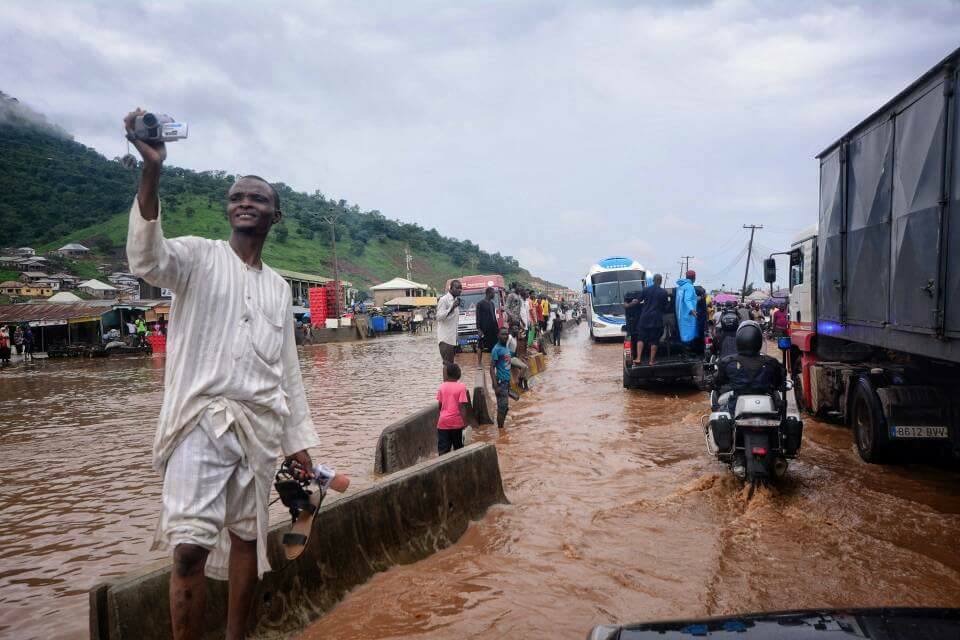In Nigeria, preparedness towards flooding has often been a story of too little, too late. Since at least 2012, hundreds of people have been killed—and millions displaced—by disastrous floods, with minimal prior warning.
Government support for flood victims typically arrives long after the damage has been wrought.
Kogi State has seen its fair share of such disappointment. But in what appears to be a break with the past, the state government has activated an Emergency Operation Centre (EOC) in Lokoja, months ahead of the anticipated 2025 floods.
The move, led by the Kogi State Emergency Management Agency (KOSEMA), is part of a broader strategy to minimise the damage that happens when rivers overflow.
In a bold expansion of scope, the government has mapped out 42 Internally Displaced Persons (IDP) camps across nine local government areas that are most vulnerable to flooding.
This represents a significant leap from the 26 camps opened in 2024. With over 1,000,000 households reportedly affected by flooding in 2024, the scale-up reflects both the urgency and the growing threat of seasonal climate extremes in the region.
The EOC, which is situated within the office of the Deputy Governor, is tasked with real-time data collection, incident tracking, and inter-agency coordination. Agencies such as the Red Cross, Nigerian Police, Fire Service, NSCDC, Ministry of Health, and the International Organisation for Migration are part of the structure.
Together, these bodies will not only respond to incidents but also help in shaping data-backed decisions for resource distribution and evacuation strategy.
With predictions from NIMET warning of heavy floods in 2025, especially in LGAs like Lokoja, Ibaji, Ajaokuta, Bassa, and Idah, the new infrastructure could mean the difference between life and loss.
No deaths were reported in the state’s last flooding, a significant win in Nigeria’s disaster response landscape. still it to be hoped that the systems now being implemented will continue to safeguard human life, farmland, infrastructure and livelihoods.
However, the true value of this effort lies in how it is maintained. Nigeria’s history is littered with stories of abandoned camps, stolen relief materials, and dilapidated emergency facilities. Without strong oversight, even the best-laid plans unravel.
The government must go beyond infrastructure and engage with communities in a way that builds ownership and reduces the risk of vandalism. Community watch systems, local volunteers, and transparent aid tracking can all help protect the investments being made now.
What makes this moment different is the shift toward data-driven planning. By centralising operations and equipping the EOC to monitor incidents in real time, Kogi is aligning itself with international disaster management best practices.
But data alone is not enough. The real challenge is acting on it quickly, transparently, and without political interference.
The broader implication of Kogi’s preparation lies in its potential to serve as a model for other flood-prone states across Nigeria. The combination of early planning, multisectoral collaboration, and community-based execution offers a replicable template.
If it succeeds, Kogi could attract support from international climate resilience funds and disaster risk reduction programmes, further bolstering its capacity to respond.
As the effects of climate change continue to intensify, floods are no longer once-in-a-decade events. They are annual threats. And so, preparedness must evolve from a reactionary measure to a permanent part of governance.
States must invest not just in tents and relief food, but in data systems, durable infrastructure, public awareness, and cross-agency communication.
Kogi’s 2025 flood readiness shows signs of this evolution. With millions at risk and livelihoods hanging in the balance, it is an urgent test of how seriously Nigeria takes the threat of climate-induced disasters. It is also a test of political will, operational efficiency, and community resilience.
When the waters eventually overflow as predicted, the true test won’t be the number of camps opened or the size of the relief packages. It will be in how swiftly people are moved to safety, how transparently aid is distributed, and how well lives are restored in the aftermath.
In Nigeria, especially Kogi State, flood preparedness has often fallen short, with the government typically providing aid too late. However, Kogi State is taking proactive steps for the anticipated 2025 floods by establishing an Emergency Operation Centre (EOC) in Lokoja to improve disaster response. This involves mapping 42 Internally Displaced Persons (IDP) camps across vulnerable areas, a significant increase from previous efforts. The EOC will integrate various agencies to enable data-driven, real-time incident tracking and coordination to enhance resource distribution and evacuation efforts.
The state government aims to shift toward data-driven planning, with support from agencies such as the Red Cross and the Ministry of Health, to forestall the severe impacts that floods bring annually as a result of climate change. The challenge is to maintain the initiative through strong oversight and community involvement to prevent issues like abandoned camps and mismanagement of relief materials. Success in Kogi could set a benchmark for other Nigerian flood-prone regions and potentially attract international climate resilience funding.
Overall, Kogi’s initiative reflects an emerging understanding that flood preparedness must be integrated into permanent governance structures. The success of this initiative will depend on the speed and transparency of the response, the effectiveness of aid distribution, and the community's resilience in restoring their lives post-flooding.






